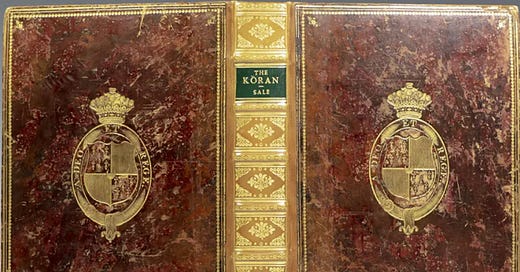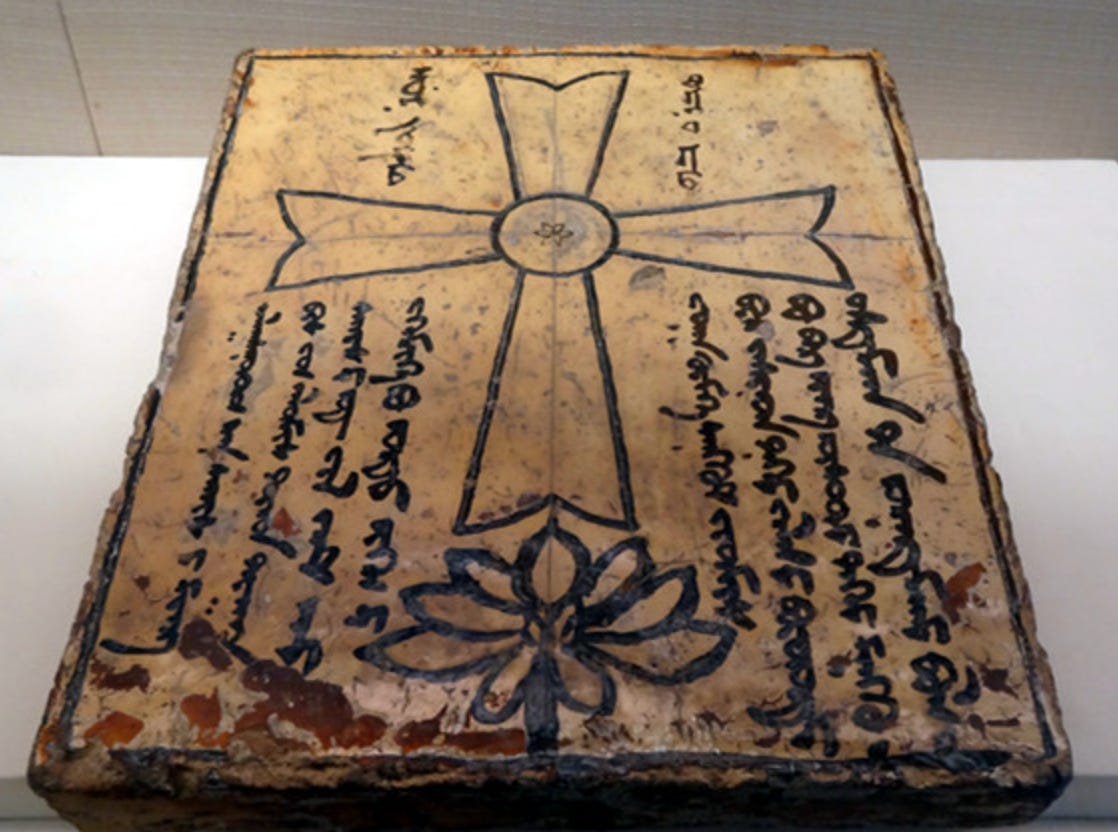Which allegedly historical religious text is accurate? According to the Qur’an, Jesus was not crucified. From Rev. Taylor (Dieg. p. 354.), “The Basilidians, in the very beginning of Christianity, in like manner denied that Christ was crucified, and asserted that it was Simon of Cyrene, who was crucified in his place: which account of the matter stood its ground from the first to the seventh century, and was the form in which Christianity presented itself to the mind of Mahomet, who, after instructing us how the Virgin Mary conceived by smelling a rose, tells us, that “the Jews devised a stratagem against him, but God devised a stratagem against them, and God is the best deviser of stratagems.” “The malice of his enemies aspersed his reputation, and conspired against his life, but their intention only was guilty; a phantom or a criminal was substituted on the cross, and the innocent Jesus was translated into the seventh heaven.” (See the Koran, C. iii. v. 53, and C. iv. v. 156, of Maracci’s edition.)
The Alcoran’s origins you’re expected to believe in are highlighted by Mahmut in his letter to Orchan Cabet, Student of the Sciences, and Pensioner to the Grand Signior, “It has been a long Time since the Christians have openly published Libels against our Holy Lawgiver; and the Book which he received from the Hands of Gabriel, one of the chief Princes of Heaven: They affirm for an undoubted Truth, That Mahomet himself compos’d that Volume of Light, by the Help of Nestorius a Christian Monk, and Abdalla a Jew: And that it is but an artificial Medley, a Hotch-potch, or Gallimaufry of Pagan, Jewish, and Christian Principles; cunningly suited and blended together, in order to gain Proselytes of all Religions.”
Forster called Tartars Nestorians, who are professors of the religion of the Lama. They were only followers of Christna. Here you see an Epitaph of a Nestorian, unearthed at Chifeng, Inner Mongolia. (Formerly Tartary)
Chinese stone inscription of a Nestorian Cross from a monastery of Fangshan District in Beijing (then called Dadu, or Khanbaliq), dated to the Yuan Dynasty (AD 1271–1368) of medieval China.
Mahmut continued, “I protest by the Veneration I owe to the Eternal God of Heaven, That I really believe the Alcoran to be of divine Original. Such is the inimitable Elegance of the Stile, the Brightness and Force of its Reasons and Arguments, the wonderful and charming Contexture of Things Historical, Moral, and Divine; that all the Writings in the World beside seem to be flat and insipid, compared with this Sacred and Stupendous Pandect of Wisdom. Yet, I must confess, I know not how to answer the Accusation of the Nazarenes, because I have never read any Mussulman Treatise, that undertook to refute these Calumnies: Which makes me apt to think, there is none such extant. For I have made diligent Enquiry, discours’d with several learned Doctors of our Law: but can gain no Satisfaction in that Point.”
But in the world of researchers who just want to figure out the Truth, and what happened from a historical perspective, without taking sides or being emotionally attached to any outcome, the origins of the Qur’an are much different than what religious people believe. In my latest book Spirit Whirled: Terminalia, I included a quote from Higgins, “The Koran, as it is admitted, was made up after his (Mohamed’s) death, in a moment of confusion and civil strife, partly from papers in a state of rottenness, and partly from the memories of his followers; and that, twenty-two years afterwards, it was again made up or redacted by Othman. Thus it can be called no better than a forgery.”
Become a member to access the rest of this article.
Keep reading with a 7-day free trial
Subscribe to Ancient History, Mythology, & Epic Fantasy to keep reading this post and get 7 days of free access to the full post archives.







